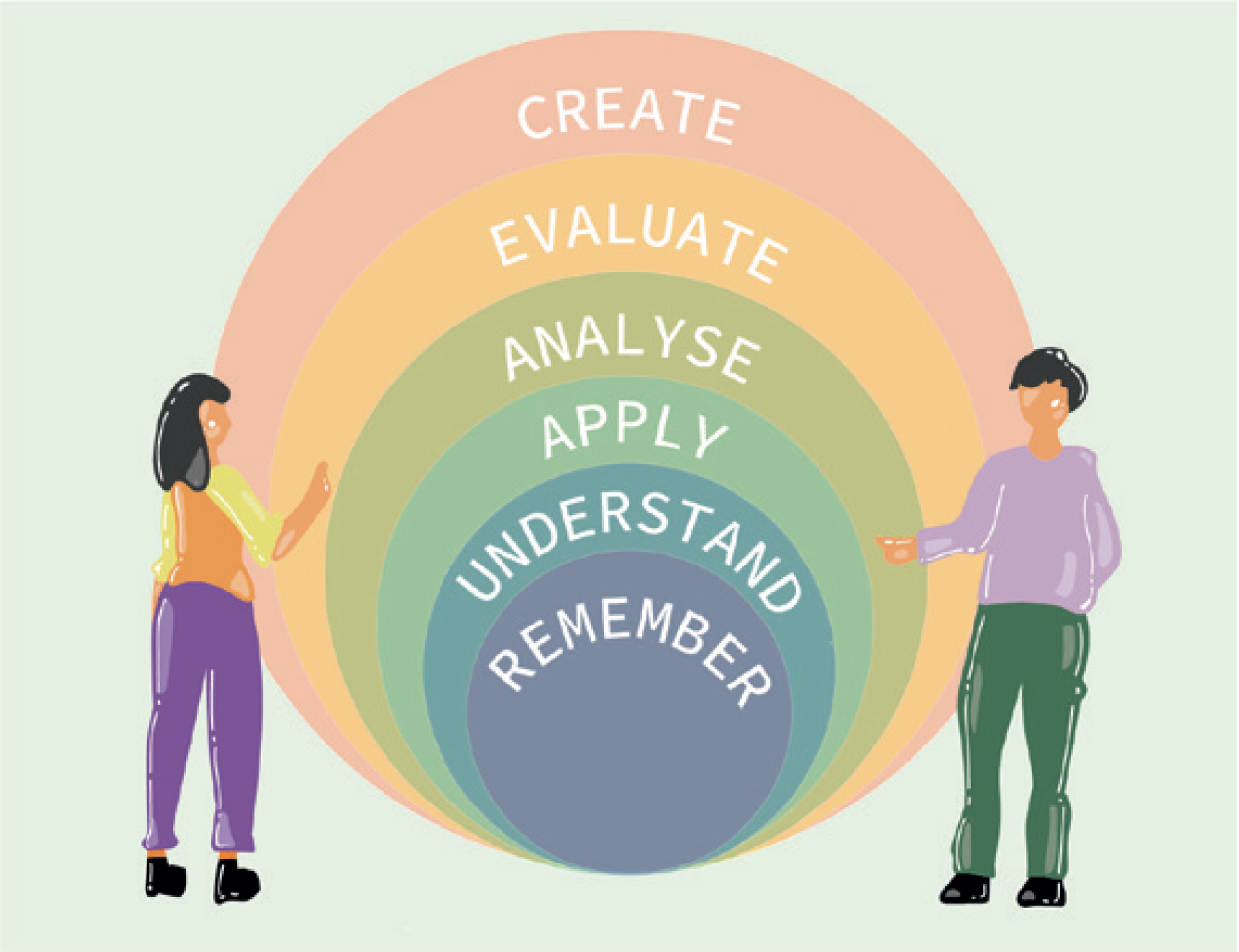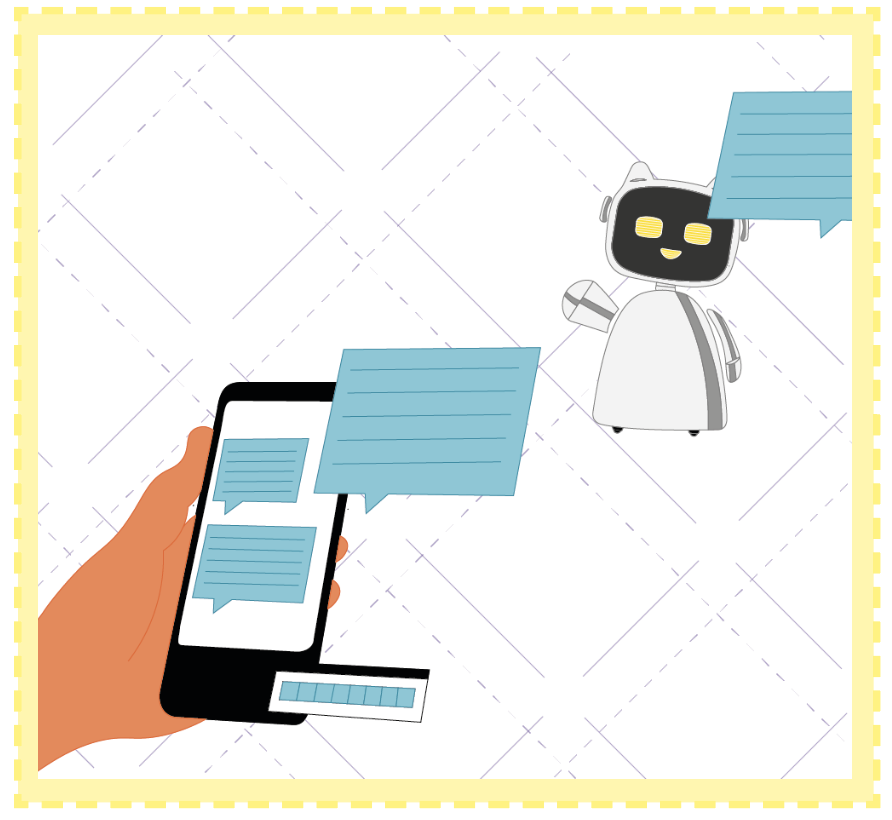#09 - Use of AI-based tools in teaching (Part 1)
Preparing courses
AI-based text-generating tools such as ChatGPT can not only be used by students to support their learning process, but also hold great potential for teachers. This is because on the one hand, they can increase the efficiency of course preparation and on the other hand, they can be used in courses in a didactically meaningful way. This article shows possible applications of AI-based tools in various steps of the planning and preparation of a course.

Please always check the suggestions made by AI-based tools critically and revise them if necessary before using them. Often it is necessary and helpful to rephrase, add to or specify the prompt to obtain better results.
Rough and detailed planning of a course
When making a rough or detailed plan of a course, AI-based tools can support you as a teacher in the following ways:
- Formulating learning outcomes: You can use AI-based tools to formulate learning outcomes or to improve the wording. In the prompts, you can include the place of the course in the curriculum, learning goal taxonomies and competence areas as well as the specific requirements of your target group (prior knowledge, skills and needs).
- Selecting and structuring content: You can use AI-based tools to help collect potential course content and select it depending on the learning outcomes, the target group and the available time (also: ECTS workload). In addition, you can receive suggestions for structuring and distributing the content (hierarchy and sequences) and for didactically sensible learning paths (e.g. distribution between in-person lessons and self-study).

- Creating a semester plan/syllabus: Based on the learning outcomes and the content to be covered, you can let AI-based tools suggest how to structure the semester plan and how to balance and arrange the topics in a meaningful way. You can also include the learning outcomes, the semester plan, information on the mode of assessment as well as the assessment criteria, further reading recommendations and other information that is important for the students (e.g. required prior knowledge).
- Alignment of assessment and educational activities with learning outcomes (Constructive Alignment): Constructive alignment means aligning learning outcomes, teaching methods and assessment. AI-based tools can suggest teaching and learning activities that correspond to the learning outcomes and provide ideas for an interactive and varied course design. AI tools can also help you develop competency-based assessment tasks that validate that students have achieved the learning outcomes.
- Methodological design of teaching-learning sequences: AI-based tools can make specific suggestions on how a lesson (face-to-face or online) can be methodically designed and divided into different phases, depending on their didactic function (e.g. activating prior knowledge, informing, processing and checking learning success).
- Time management: AI-based tools can help you create a realistic timetable, taking into account the available course duration, ECTS credits and target learning outcomes.
Creating educational materials
AI-supported tools can help you prepare content for different teaching formats and media, e.g. by structuring lectures and creating handouts and scripts. In addition, AI-based tools can create or improve your explanations of subject-specific concepts and can also adapt them to different levels of prior knowledge. By creating practical examples or ideas for illustrating theoretical content, the content can be presented in a comprehensible form.
In connection with the methodological course design, the following learning elements, among others, can be created or compiled with the help of AI-based tools:
- Learning tasks with instructions, hints and solutions
- Case studies and project ideas for students to work on
- Content/arguments for different points of view in pro-con discussions
- Erroneous texts or erroneous code for students to check and correct
- Knowledge checks and quizzes
Example prompt to formulate learning outcomes based on the course "Informatik BW", created by TeachingAcademy and Thorsten Ruprechter
You are an expert in university teaching and are teaching at a technical university. Create learning outcomes for the course “Computer Science for Civil Engineering“ according to the learning objectives taxonomy of Anderson and Krathwohl. The taxonomy has 6 levels, from lowest to highest: “Remember“, “Understand“, “Apply“, “Analyse“, “Evaluate“ and “Create“.
Create two learning outcomes for each of the following topics, at least one of which is at the “Apply“ level, and indicate the taxonomy level in each case: - The development of computer science and its most important sub-fields - The structure and functioning of a computer system - The structure and functioning of the Internet (targeted information search) - Introduction to the basics of programming (script language) - Solving mathematical problems on the computer - Data analysis with pandas. In the formulation of the learning outcomes, avoid the verbs “know“, “understand“ and similar. Use verbs that describe an active, concrete and observable action on behalf of the students.
Follow the structure in this example: Topic: “Solving mathematical problems on the computer“ Learning outcome: “At the end of the course, students will be able to implement mathematical algorithms and numerical methods for solving engineering problems“.
Download the full prompt and result (generated in German).
Preparing exams
AI-based tools can also help you when preparing exams, e.g. in the following tasks:
- Creating open and closed exam questions and corresponding sample solutions that match
the learning outcomes - Creating schemes and question catalogues
- Creating case studies and project ideas
- Creating assessment criteria and assessment grids
- Checking your own exam questions for alignment with the learning outcomes

Sources (selection):
Einfachlehren.de. 2023. Einsatzmöglichkeiten textbasierter KI in der Hochschullehre
Fleischmann, Andreas. 2023. ChatGPT in der Hochschullehre. Wie künstliche Intelligenz uns unterstützen und herausfordern wird. Neues Handbuch Hochschullehre A 1.30
Gimpel, H., Hall, K., Decker, S., Eymann, T., Lämmermann, L., Mädche, A., Röglinger, R., Ruiner, C., Schoch, M., Schoop, M., Urbach, N., Vandirk, S. (2023). Unlocking the Power of Generative AI Models and Systems such as GPT-4 and ChatGPT for Higher Education: A Guide for Students and Lecturers.
Hanke, Ulrike. 2023. Textgenerierende Tools wie ChatGPT als Arbeitserleichterung für Lehrende. (Vortragsreihe der Deutschen Gesellschaft für Hochschuldidaktk (dghd) zu KI in der Hochschullehre), Recording on Youtube

 TU Graz Teaching Academy
TU Graz Teaching Academy